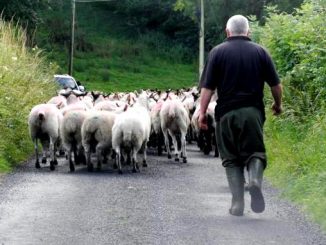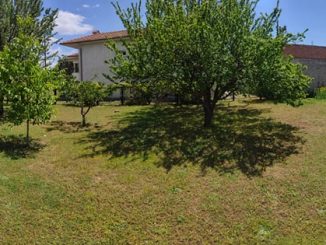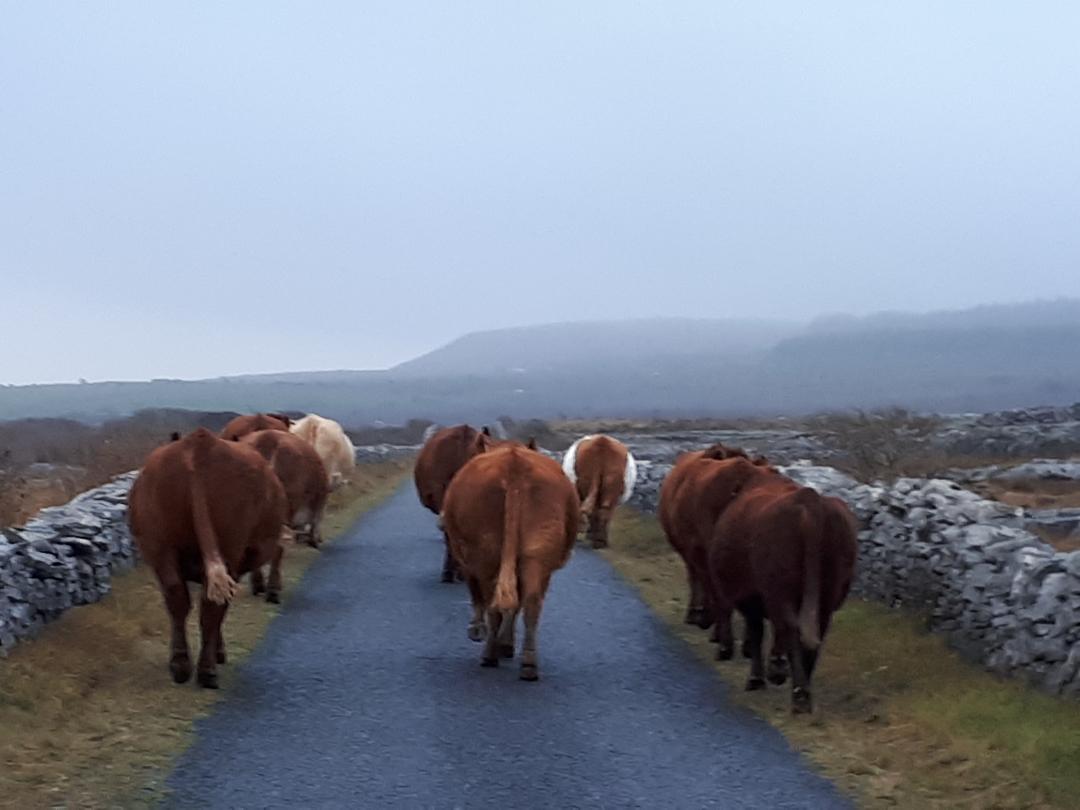
We’re back on Shane Casey’s farm in Co. Clare, Ireland, where winter is an active period of herding livestock that are outwintered amidst the limestone pavements of The Burren. There’s decisions to be made about when to bring ewes inside to lamb, and cows home to calve. Considerations of animal welfare, economic viability, and conservation grazing are all factors in determining when the time is right.
Winter on our farm is busy, yet a little subdued. As we head into the New Year, there’s a few weeks left before lambs and calves begin to arrive, but there’s still herding to be done every day. And herding on the Burren is no easy task. All the sheep and cattle are outwintered, with the latter spread across three main winterages. The weanlings are in one, springers (first time calvers) in another, and the rest of the herd in the third.
A slow and steady walk
The cows are now six months in calf, and to get to the main herd, there’s a steep twenty-minute hike uphill. Then you have to try to get a headcount (they’re good at hiding in hollows and behind bushes and large rocks!), while checking they’re OK, and keeping one eye on the grazing levels (ground conditions can change rapidly on the winterage, with only an inch or so of soil depth in places) and water in the springs (they can dry up without rain, or freeze over in cold weather), with the other eye scanning for anything out of place, like a gap in the wall.
Of course, on many Burren farms, including our own, a winterage in not always a singular block of land, and so there is a need to move cattle from one area to another during winter – another reason to keep a close eye on grazing levels. This is often done on foot due to a lack of roads. But even where there are roads, it is often preferable to take a slow and steady walk (often early in the morning when roads are quieter) than trying to handle and load heavily in-calf cows onto trailers.
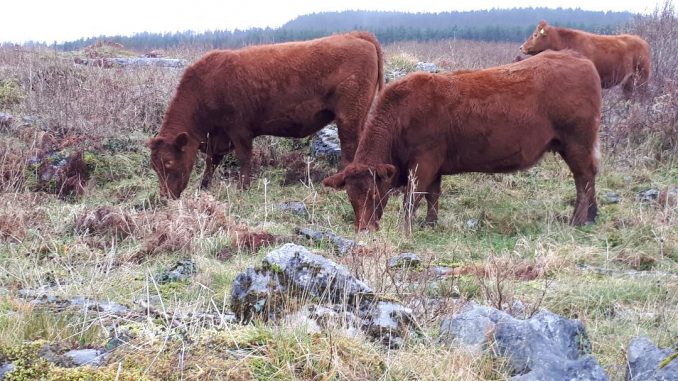
Managing gestation
Thankfully this year, the cows are in great condition after an unusually mild Autumn, though Storm Barra in early December brought a swift end to that.
The aim of suckler farming is to produce one calf per year, (the main calving period on our farm begins from St Patrick’s day, March 17th), so the hope is that they will become pregnant on the first attempt, and therefore calve on roughly the same date as the year before.
Otherwise, it’ll be three weeks later, which is still within the main calving period, but after that it can become a little unmanageable (both at the time of calving, and in the Autumn when weaning – a calf born too late may need to be carried over the winter or sold at a younger age resulting in a lower price).
This raises the question of whether or not it’s better to calve earlier in the Spring (early/mid-February), like what happens on many other farms, and have a stronger, and more valuable weanling, in the Autumn. However, calving earlier on the Burren would require additional supplementary feeding, eating into any additional profit margin, and can bring about other challenges, particularly for our farm set-up…
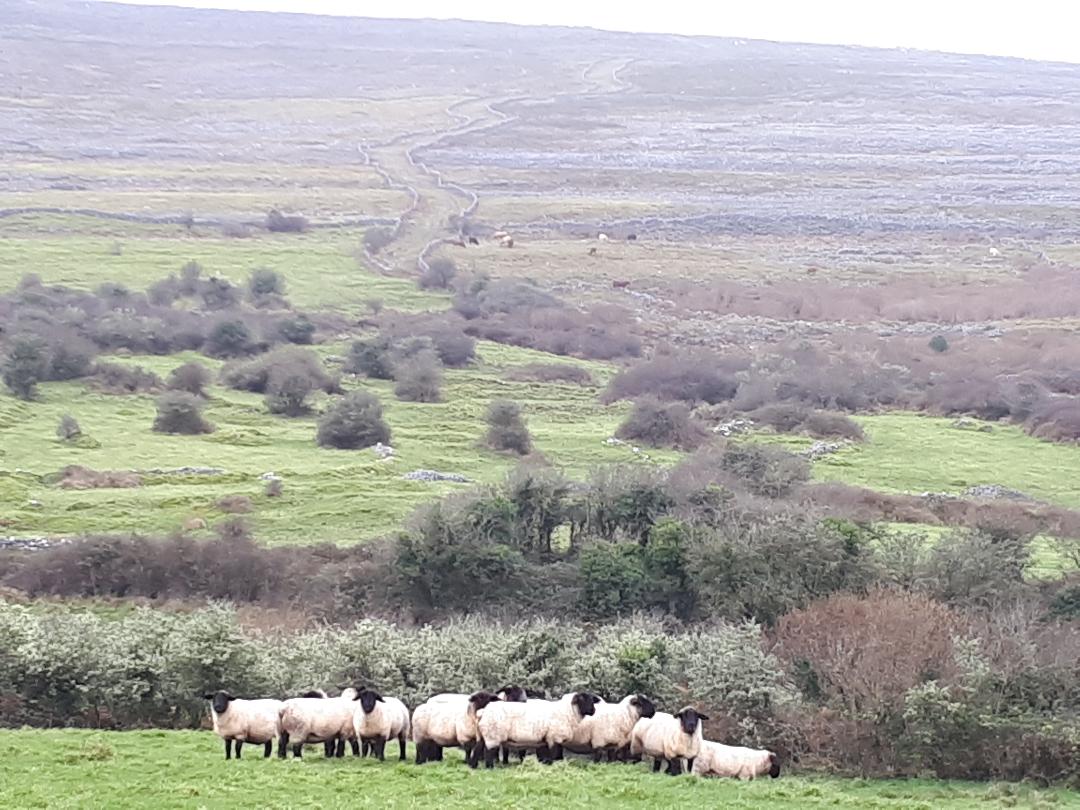
Calving
On some Burren farms, calving takes place on the winterage ground, if it is easily accessible from the farmyard, and easy to give a little supplementary feeding (Burren ration, hay or silage) if needed at calving time. On our farm it’s not as straightforward.
Our farmyard lies beside the coast road in Fanore, at the foot of Blackhead mountain, and is surrounded by a mixture of small green paddocks and relatively flat and accessible limestone grassland. Beyond this, the mountain rises sharply, and there’s a stone wall separating the two, which we call the ‘mountain wall’. On the far side of the mountain wall is our ‘winterage’ – great for winter grazing, but it’s simply not accessible enough to allow cows to calve up there (to either allow proper monitoring of calving cows, or to provide supplementary feeding).
On the near side of the mountain wall, where the land is flat and accessible, we don’t regard this as winterage – even though it’s the same type of land, it is treated differently because of its accessibility, with sheep, ponies and donkeys also grazing it.
So, we bring our cows ‘home’ from the winterage to calve. And bringing them home a month earlier to calve means two things – losing out on a month of grazing the winterage (which also has conservation implications), and a significant increase in the need for supplementary feeding.
In saying this, this year we’re trying something a little different. The springers have always been monitored a little more closely than the older cows, just in case, and brought home a couple of weeks earlier.
Last year, the springers were artificially inseminated (AI’d), rather than running a stock bull (for many farmers, the day of the stock bull may be coming to an end, with artificial insemination becoming more and more accessible), and they are due to calve in mid-February, meaning we will need to juggle a few things about to maintain a balance. However, it also means that if there is any slippage in them going back in calf, they will still be fine.
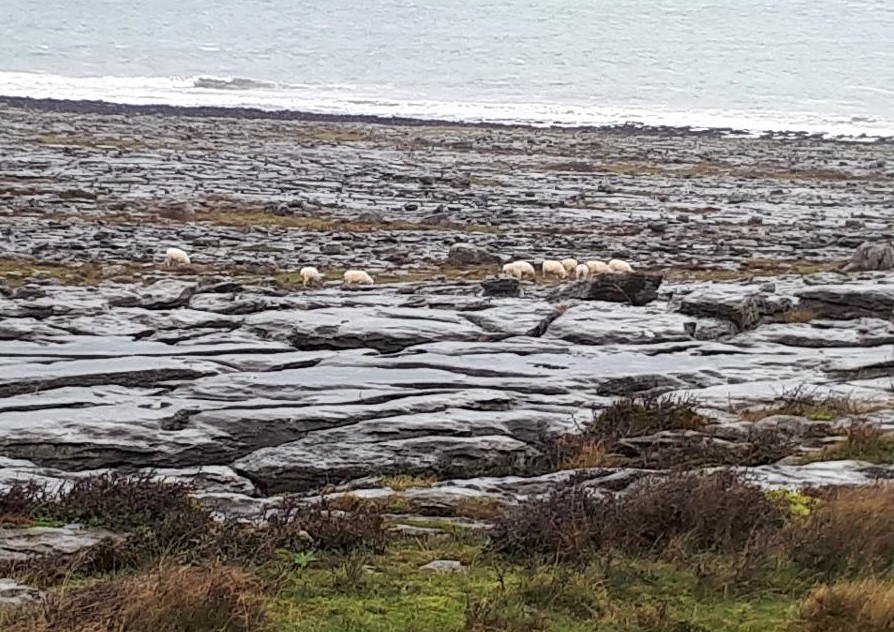
Lambing
Meanwhile, the sheep also need herding, with the Suffolk and Texel flocks within weeks of lambing, and the Galway flock a little later. The Galway flock, a mountain breed, have always been outwintered on Blackhead Mountain. Thankfully, they stay together better than the cattle, and their white fleeces are easier to see against the grey, which also makes it easier to spot if one is away on her own and in trouble.
In my grandfather’s time, they would have lambed outside as well, with Stockholm tar placed on the necks and rumps of newly born lambs to ward off predators. But the arrival of the Suffolk flock in the 1980’s changed that.
Being a lowland breed, the Suffolk ewes have always been kept on grassland during the winter, and being more economically valuable, they were brought inside to lamb to minimise any lamb losses, remaining inside for a couple of weeks until the lambs were hardy enough to go out. With the hayshed consequently set up for lambing, it was just as easy to start lambing the Galway flock inside as well. Though, they typically got turned out of the shed a lot quicker than the others!
More Letters From The Farm
Letter From The Farm | Health, Husbandry & High Quality Meat
More from Ireland
Organics, Agroforestry, Eco-schemes – for a Just Transition in Ireland
Hidden Formulas and Agri-Media – Can we Find a Fair CAP in Ireland?
Letter from a Farm | Starting the Soil Health Journey in Ireland
Letter from a Farm | Saving Carrottop – the Life of a Cow in Mayo



